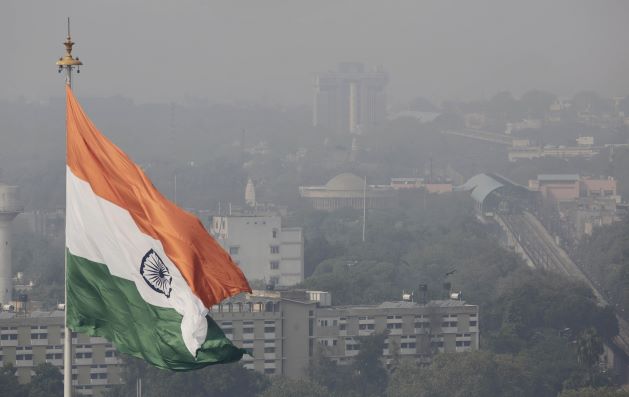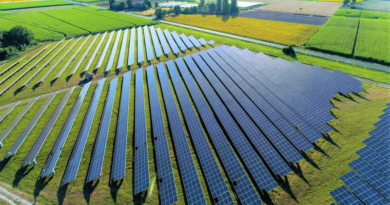4 years of India’s Flagship National Clean Air Programme- Where Are We At?
 One problem, Many Sources
One problem, Many Sources
It’s been four years since India’s flagship National Clean Air Programme (NCAP) with ₹6897.06 crores being pumped into it. EVer since, some of the top polluted non-attainment cities in 2019 have marginally improved their PM 2.5 and PM 10 levels but continue to breach the Central Pollution Control Board’s safe limits. Most of the least polluted non-attainment cities in 2019 however, have seen an increase in PM 2.5 and PM 10 levels since then.
The Union Government launched the National Clean Air Program (NCAP) on 10th January 2019 to address air pollution in 102 cities, to which some more cities were added, and some were dropped subsequently. There are now 131 cities which are called non-attainment cities, as they did not meet the national ambient air quality standards (NAAQS) for the period of 2011-15 under the National Air Quality Monitoring Program (NAMP). The country’s current annual average safe limits for PM 2.5 and PM 10 are 40 micrograms/per cubic metre (ug/m3) and 60 micrograms/per cubic metre.
The NCAP initially set a target of reducing key air pollutants PM10 and PM2.5 (ultra-fine particulate matter) by 20-30% in 2024, taking the pollution levels in 2017 as the base year to improve upon. In September 2022, the centre set a new target of a 40% reduction in particulate matter concentration in cities covered under NCAP by 2026. To meet these targets, approximately ₹6897.06 crores have been released to the cities under the programme and the XV finance commission.
Cities & Their Targets
Based on an analysis of air quality monitoring data from the Central Pollution Control Board’s (CPCB) Continuous Ambient Air Quality Monitoring System (CAAQMS), below are the ten most polluted and least polluted non-attainment cities with respect to PM 2.5 and PM 10 concentration in 2022.
For the purpose of this analysis, only non-attainment cities (NACs) which recorded a monitoring uptime of more than 50% were considered to ensure the quality of data from the Central Pollution Control Board’s (CPCB) Continuous Ambient Air Quality Monitoring Stations network (CAAQMS). Of the 131 non-attainment cities, there is data only for 77 NACs on the CPCB portal. Of these, 57 cities have an uptime greater than 50% for PM10, and 54 cities have an uptime greater than 50% for PM2.5. You can find the 2022 average PM2.5 and PM10 levels for all 77 cities here. Data until December 22, 2022, has been included.
Most polluted non-attainment cities
Among these cities, the national capital of Delhi ranked the most polluted in 2022, with an annual average PM 2.5 concentration of 99.71 ug/m3. However, Delhi’s PM 2.5 levels improved by over 7% compared to 2019, as seen in fig 5.
Most cities in the top 10 most polluted list of 2022 are from the Indo-Gangetic Plain, demonstrating that real and long-term solutions lie in an airshed approach to address the need for better air pollution management in the region beyond Delhi. It also reiterates the need to check pollution at source to obtain maximum benefit from pollution mitigation efforts. All three of Bihar’s non-attainment cities – Patna, Muzaffarpur and Gaya, now feature in the top 10 most polluted cities on the basis of PM 2.5 levels.
The data further shows that nine of the 10 cities which were the most polluted in 2019 have improved their PM 2.5 and PM 10 concentrations. The levels in these cities remain much higher than CPCB’s annual average safe limits for PM2.5 and PM10. In comparison to the 2019 rankings, five cities still rank among the top 10 most polluted cities in the PM2.5 list – Delhi, Noida, Ghaziabad, Jodhpur and Mandi Gobindgarh (see fig 1). However, Mandi Gobindgarh from Punjab was the only non-attainment city on the list where the PM2.5 and PM10 levels deteriorated from 61 ug/m3 to 72 ug/m3 and 134 ug/m3 to 142 ug/m3, respectively. Despite that, the city’s ranking improved as air quality in other cities would have slipped comparatively more.
Least polluted non-attainment cities
Based on the PM 2.5 and 10 concentration of non-attainment cities in 2022, the least polluted 10 cities represent a more diverse part of the country. The cleanest city with a PM 2.5 concentration of 26.33 ug/m3 is Srinagar from Jammu and Kashmir. Kohima in Nagaland, with a PM 10 concentration of 26.77 ug/m3, was also the cleanest city in the country. Gorakhpur in Uttar Pradesh, touted for its air quality management efforts, features in the cleanest cities list for both PM 2.5 and PM 10. While among the least polluted non-attainment cities this year, nine of the 10 cities have breached the CPCB annual permissible limit of 60 ug/m3 for PM 10, indicating the air to breathe isn’t safe even in the cleanest cities.
Unlike the most polluted cities, most of the least polluted cities in 2019 saw air quality levels deteriorate and rankings slip. For instance, Mumbai was the seventh least polluted city in 2019 but its PM 2.5 levels increased from 34 ug/m3 in 2019 to 49 ug/m3 in 2022 and dropped to being the 23rd least polluted city in the country. Over the years, monitoring in the city improved. In 2019 there were just nine CAAQMS in Mumbai, which improved to 20 operational CAAQMS in 2022. Clearly, a wider network of data allowed for an improved understanding of pollution trends in Mumbai. Similarly, in Chennai, monitors increased from one in 2019 to nine in 2022.
In January 2019, there were 152 CAAQMS in the country. This has increased to 418 CAAQMS currently. The strengthened CAAQMS network in the country has provided a truer picture of the air quality, thereby giving policymakers better data for air pollution management.
Aarti Khosla, Director, Climate Trends said, “Trend analysis of air pollution levels of cities across the country show that there is marginal improvement in air quality in 2022. Esp when we observe the data from 2019 to 2022. Even today, air quality across cities in north India remains very poor to severe. The top four cities with the highest PM2.5 are Delhi and NCR cities and the top 9 are from across the Indo-Gangetic plains. The results are unsurprising, but on detailed examination also bust myths and show that coastal cities like Mumbai are equally affected by air pollution. While the CPCB has already issued stricter reduction targets for the non-attainment cities, we are just a year away from 2024, the original target for NCAP. Many cities are still far from reaching their reduction targets and may be unable to do so without aggressive plans and stringent measures.”
Ronak Sutaria, Founder and CEO, Respirer Living Sciences said, “The analysis shows a clear trend that for the more coarse PM10 pollutant, levels in all the 10 most polluted cities of 2019 have shown a clear improvement in 2022. Cities like Varanasi, Moradabad & Talcher, which were in the top 10 polluted cities in 2019, have shown improvement of between 35% to 50% by 2022. Conversely, all the 10 cleanest cities by coarse pollutant levels in 2019 have shown a deterioration in their air quality levels in 2022. It means that the cities which were most polluted and have rigorously implemented policies with support from agencies like the CAQM, National Knowledge Network and Central and State Pollution Boards to clean their air are showing results. For the more harmful PM2.5 pollutants, which tend to have different sources than PM10, the improvements have been marginal at best. This shows that much work is needed to reduce the more finer sources of pollutants. The trend of the most polluted showing improvement and cleanest/least polluted cities showing deterioration holds true for PM2.5 pollutants too, which shows that more vigilance and implementing action plans in the most polluted cities which are monitored is showing results and less vigilance of cleaner cities is making them worse.”
National Air Quality Monitoring Programme (NAMP) data
Each year until 2020, the CPCB put out pollutant concentrations from its manual monitoring stations across cities. However, for 2021, the CPCB has integrated the data from manual monitoring stations and continuous monitoring stations and is hence not comparable to previous years. Below are the top 10 most polluted and least polluted non-attainment cities in 2021 based on PM 2.5 and PM 10 concentrations.
For both PM 2.5 and PM 10 concentrations, the majority of cities in the top 10 most polluted list are from Uttar Pradesh. As found in the CAAQMS data, all the cities on the list are from the airshed of the Indo-Gangetic Plains, with the exception of Byrnihat from Meghalaya. The city reported a PM 10 concentration of 226 ug/m3, but its PM 2.5 levels were as low as 30 ug/m3.
In 2021, Ghaziabad was the most polluted with respect to PM 2.5 levels and ranked third for PM 10 levels. Dhanbad in Jharkhand was the most polluted non-attainment city in the country for PM 10 levels, the reason for which could be the transport of coal, a major economic activity of the region. The cleanest city for both PM 2.5 and PM 10 levels was Parwanoo from Himachal Pradesh.
A joint initiative by Climate Trends and Respirer Living Sciences, NCAP Tracker is an online hub for the latest updates on India’s clean air policy, the National Clean Air Programme (NCAP). It is designed to track India’s progress in achieving the 2024 clean air targets set under the NCAP.




